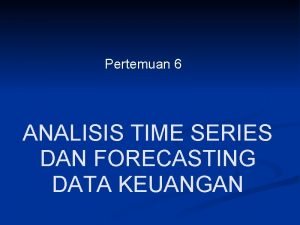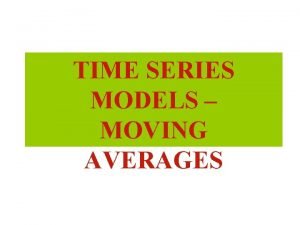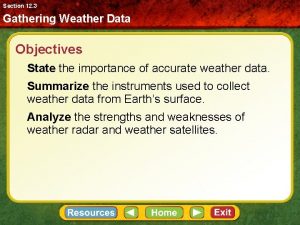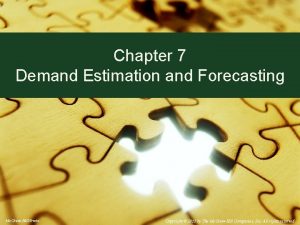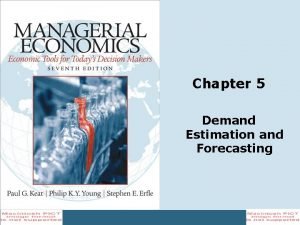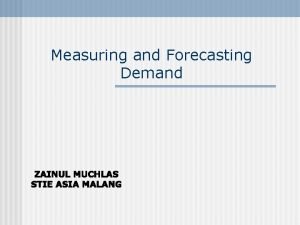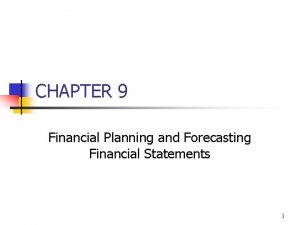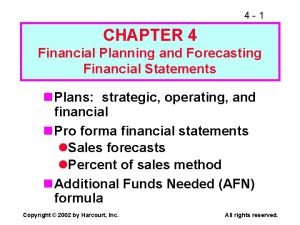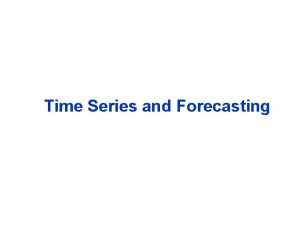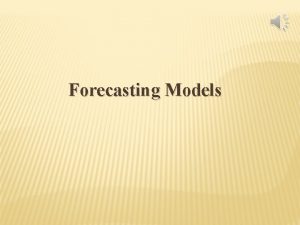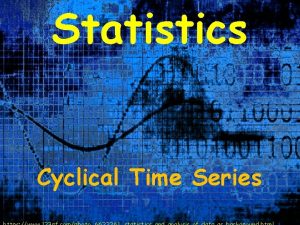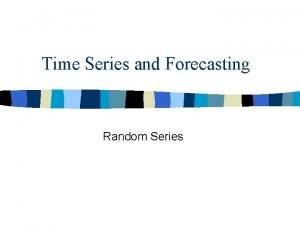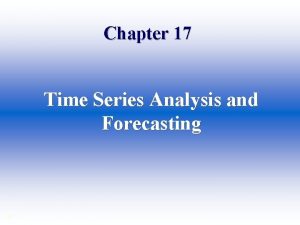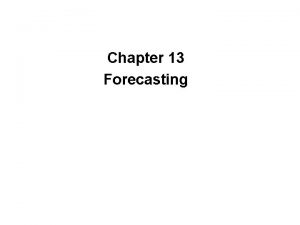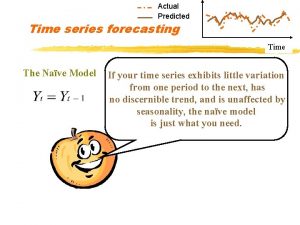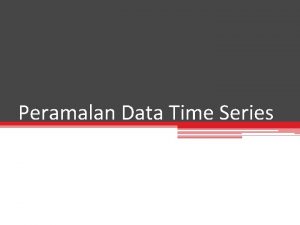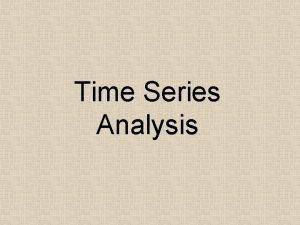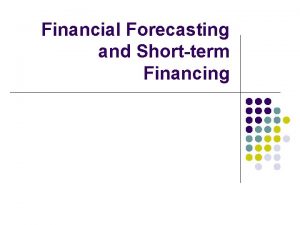Time Series and Forecasting Time Series A time






















- Slides: 22

Time Series and Forecasting

Time Series A time series is a set of statistical observations arranged in chronological order. A time series is a collection of data recorded over a period of time - weekly, monthly, quarterly, or yearly.

Example of Time series Economics - weekly share prices, monthly profits Meteorology - daily rainfall, wind speed, temperature Sociology - crime figures (number of arrests, etc), employment figures

Utility of Time series analysis It helps in understanding past behaviour It helps in planning future operations It helps in evaluating current accomplishments It facilitates comparison

Components of time series Secular Trend Seasonal Variations Cyclical Variations Irregular Variations

Secular Trend is a long term movement in a time series. It is the underlying direction (upward or downward) and rate of change in a time series, when allowance has been made for the other components.

Understanding Secular Trend Basic tendency of production, sales, income, employment, etc. • Population Change • an aging population (which will tend to have different spending and savings habits than a younger population) • Technological Progress • the expansion of a particular technology (such as the Internet) • heavy reliance on certain commodities (like oil) • Large scale shift in customer tastes

Understanding Secular Trend Linear and nonlinear trend Definition of long period Long term movement

Secular trend in equity market

Measurement of secular trend Freehand smooth curve Semi-average method Moving average method Methods of least squares

Seasonal variations • Periodic movements in business activity which occur regularly every year and have their origin in the nature of the year itself. • Repeat during a period of 12 months

Factors causing seasonal variations Climate and whether conditions Customs, traditions, and habits

Cyclical variations of non-seasonal nature, whose periodicity is unknown. Changes of economy activity as a result of recurring causes.

Business Cycle

Business cycle Do not show regular periodicity Longer than one year (2 to 10 years) Different set of causes

Irregular Variations Irregular variations refer to such variations which do not repeat in a definite pattern. Also called erratic, accidental and random. Causes of such variations may be floods, earthquakes, strikes, wars, etc.

Components of a Time Series Additive Model • Y=T+C+S+R Multiplicative Model • Y=T×C×S×R

we denote the time series by Y, the secular trend by T, the seasonal movements by S, the long term cyclical movements by C and the irregular or residual component by R

Preliminary adjustments Calendar Variations Population changes Price changes Comparability

Measurement of Trend Freehand or Graphic Method Semi-average Method Moving average method Methods of Least Square

Practical 1 Year Sales ( in Rs. Lakhs) 2003 10 2004 13 2005 16 2006 21 2007 24

Practical 2 Year 1993 1994 1995 1996 1997 1998 1999 2000 No. of Industrial Failures 23 26 28 32 20 12 12 10
 Pendekatan dalam analisis time series
Pendekatan dalam analisis time series Centered moving average example
Centered moving average example Time series forecasting
Time series forecasting Series aiding and series opposing
Series aiding and series opposing Compare and contrast analog and digital forecasts.
Compare and contrast analog and digital forecasts. Compare and contrast analog and digital forecasting
Compare and contrast analog and digital forecasting Maclaurin series vs taylor series
Maclaurin series vs taylor series Heisenberg 1925 paper
Heisenberg 1925 paper Maclaurin series vs taylor series
Maclaurin series vs taylor series Taylor frederick
Taylor frederick P series server
P series server Feedback amplifier topologies
Feedback amplifier topologies Sum of infinite series
Sum of infinite series Technology life cycle
Technology life cycle What is demand forecasting and estimation
What is demand forecasting and estimation Demand estimation and forecasting
Demand estimation and forecasting Demand forecasting and replenishment
Demand forecasting and replenishment Barometric methods are used to forecast
Barometric methods are used to forecast Forecasting and demand measurement
Forecasting and demand measurement Forecasting and demand measurement in marketing
Forecasting and demand measurement in marketing Collaborative planning forecasting and replenishment ppt
Collaborative planning forecasting and replenishment ppt Financial planning and forecasting
Financial planning and forecasting Financial planning and forecasting
Financial planning and forecasting
